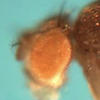Insulin regulates an essential conserved signaling pathway affecting growth, proliferation, and meta- bolism. To expand our understanding of the insulin pathway, we combine biochemical, genetic, and computational approaches to build a comprehensive Drosophila InR/PI3K/Akt network. First, we map the dynamic protein-protein interaction network sur- rounding the insulin core pathway using bait-prey interactions connecting 566 proteins. Combining RNAi screening and phospho-specific antibodies, we find that 47% of interacting proteins affect pathway activity, and, using quantitative phospho- proteomics, we demonstrate that $10% of interact- ing proteins are regulated by insulin stimulation at the level of phosphorylation. Next, we integrate these orthogonal datasets to characterize the structure and dynamics of the insulin network at the level of protein complexes and validate our method by iden- tifying regulatory roles for the Protein Phosphatase 2A (PP2A) and Reptin-Pontin chromatin-remodeling complexes as negative and positive regulators of ribosome biogenesis, respectively. Altogether, our study represents a comprehensive resource for the study of the evolutionary conserved insulin network.
RNAi validation
. 9/13/2016. “An Integrative Analysis of the InR/PI3K/Akt Network Identifies the Dynamic Response to Insulin Signaling.” Cell Reports, 16, 11, Pp. 3062-3074.Abstract
Publication describes TRiP resources
. 2012. “FlyRNAi.org--the database of the Drosophila RNAi screening center: 2012 update.” Nucleic Acids Res, 40, Database issue, Pp. D715-9.Abstract
. 2010. “Genomic screening with RNAi: results and challenges.” Annu Rev Biochem, 79, Pp. 37-64.Abstract
. 2007. “Design and implementation of high-throughput RNAi screens in cultured Drosophila cells.” Nat Protoc, 2, 9, Pp. 2245-64.Abstract
. 2011. “False negative rates in Drosophila cell-based RNAi screens: a case study.” BMC Genomics, 12, Pp. 50.Abstract
. 2008. “Identification of novel genes involved in light-dependent CRY degradation through a genome-wide RNAi screen.” Genes Dev, 22, 11, Pp. 1522-33.Abstract
. 2013. “Depleting gene activities in early Drosophila embryos with the "maternal-Gal4-shRNA" system.” Genetics, 193, 1, Pp. 51-61.Abstract
. 2008. “Mechanisms to suppress multipolar divisions in cancer cells with extra centrosomes.” Genes Dev, 22, 16, Pp. 2189-203.Abstract
. 2005. “Functional genomic analysis of the Wnt-wingless signaling pathway.” Science, 308, 5723, Pp. 826-33.Abstract
. 2013. “FlyPrimerBank: an online database for Drosophila melanogaster gene expression analysis and knockdown evaluation of RNAi reagents.” G3 (Bethesda), 3, 9, Pp. 1607-16.Abstract
. 2009. “Bili inhibits Wnt/beta-catenin signaling by regulating the recruitment of axin to LRP6.” PLoS One, 4, 7, Pp. e6129.Abstract
. 2007. “Biochemical and functional characterization of Orai proteins.” J Biol Chem, 282, 22, Pp. 16232-43.Abstract

